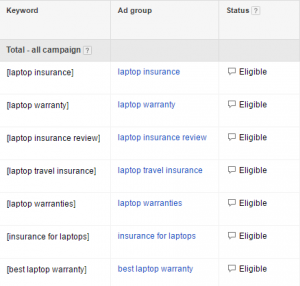— April 23, 2018

Free-Photos / Pixabay
“Do you know how much money I would pay for that kind of information?” A senior level executive, at one of the fastest growing companies in America, said, and then sat back and pondered the answer to his own question.
He finally blurted, “A lot!” The message was clear.
I had been discussing 360° feedback and the kind of information that it can provide. He was not well versed with this type of assessment and I watched as his excitement visibly grew.
With field agents and leaders scattered across the country and working at customer sites every day, he desperately wanted to know how they were doing, how they could improve, and how they could develop into successful leaders. In utilizing 360° feedback, the organization identified leadership strengths and gaps and develop targeted development plans to improve performance.
How the 360° assessment works
360° assessments enable leaders to accurately and quickly learn how their bosses, direct reports, peers, and other associates perceive their leadership effectiveness provide valuable input on how they can develop themselves.
Once the 360° assessment has been completed, participants receive a comprehensive, personalized report of results that details leadership strengths, challenges, and insights that can be turned into action for immediate application.
As we talk to leaders about the power of 360° assessments, we are amazed how energized they become. It is like they are starving for information about their own leadership performance. Then we learn the truth—they ARE starving for information about their own leadership performance. They want to develop themselves and their teams into a world-class organization, but they lack the real and timely feedback to build and utilize their human capital and leadership abilities. This is especially true in high-growth or transforming organizations.
So, what are the advantages of a 360° leadership assessment? Below are the 6 reasons why a 360 is such a powerful, developmental tool for leaders.
6 Benefits of a 360° Assessment for Leaders
- Sends a Message that Development is Important: What a leader pays attention to tells others what they should pay attention to as well. When a leader focuses on personal leadership development, then his or her people will know this is valued in the organization. When a leader takes the time to implement and act on the insights from a 360° assessment either using executive coaching or during a leadership program, his or her employees will see that leadership development is valued.
- Increases Self Awareness & Self Improvement: We all have blind spots that might prevent us from being fully aware of how others perceive us. We are aware of our own intentions, but the impact of our actions may create a very different story. It is through feedback from others that we increase our self-awareness of our blind spots and how our intentions may or may not show up in effective ways. Each of our four critical relationships (boss, direct reports, peers, and customers) might view our leadership effectiveness differently. Learning these perceptions can arm us with valuable information to improve our leadership intelligence.
- Provides Fast, On-The-Job Application: Because 360°’s focus on observable leadership behaviors, the feedback data can be immediately applied on-the-job. For example, if a manager scores low on the statement, “Effectively seeks multiple perspectives in solving problems,” that manager knows exactly where to focus to improve his or her performance. The report easily gathers feedback from many evaluators, often 7-15+ people, through a 20 min online assessment tool. Thus, the 360° report represents hours of feedback from many key stakeholders condensed into one summary tool.
- Ensures Data-driven Action with Accountability: 360° assessments focus on specific leadership behaviors that matter to the organization. During a coaching debrief, the leader can use clear and concise 360° data to identify development trends and select 1-3 personal focus areas that can become the basis for an action plan. An Individual Action Plan (IAP) is approved by one’s boss and targets the most important leadership development areas for each leader. During subsequent coaching sessions and also with conversations with one’s boss, the action plan is reviewed, updated, and tracked to ensure progress occurs.
- Creates a Personal Development Conversation: People are often well intentioned and want to help others improve, yet they may not have the language or skills to have that kind of a conversation. 360° assessments provide a clear leadership framework to form the agenda for an effective development conversation. It creates a common leadership language for a boss and manager to know what to focus on during a development conversation.
- Identifies the Talent Needs In Your Organization: Organizations would love to know what their leaders are good at and where they need improvement. While the individual 360° report is confidential to the participant and coach, looking at the trends across many different reports can be eye-opening. After a group of leaders participate in a 360° assessment, their scores can be grouped together revealing the overall strengths and challenges of the organization’s leaders. Using this group data, specific leadership development experiences and programs can be created to address broader gaps. Talent reviews and succession planning are more informed through group data from 360° reports.
Time to Act
The bottom line is that leaders need to be increasingly aware of how they perform in achieving business and people results. 360° assessments provide specific leadership competencies and behaviors that reveal invaluable personalized feedback for the individual and for the organization. When specific and relevant questions are asked, then specific and relevant solutions can be implemented. Isn’t that something you would pay a lot for?
Business & Finance Articles on Business 2 Community
(47)






